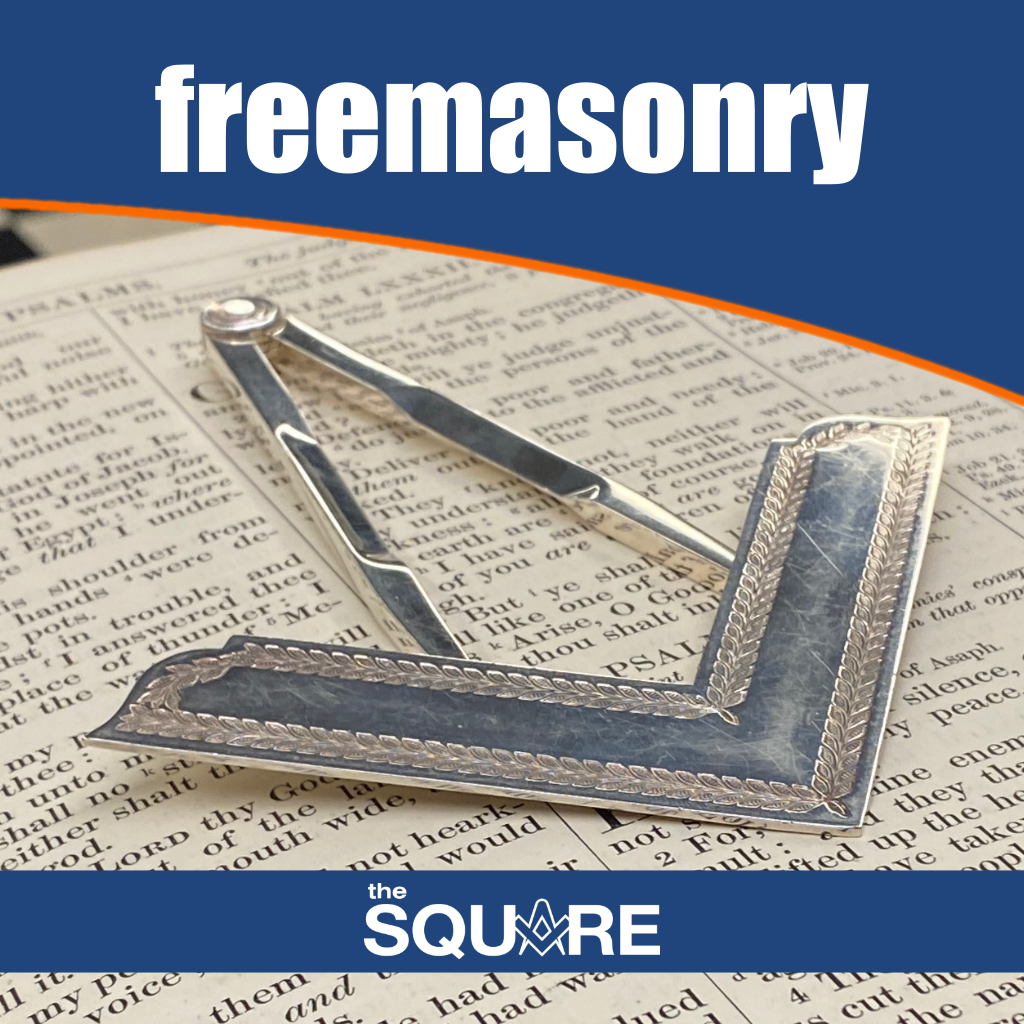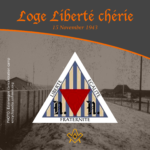Freemasonry
From the end of the 13th century, local guilds of stonemasons controlled their credentials and interactions with authorities and clients.
These guilds became Freemasonry or Masonry. Modern Freemasonry has two primary groups:
A Regular Lodge must have a book of scripture open, all members must believe in a Supreme Being, no women are allowed, and no religion or politics are spoken in lodge.
Liberal or Continental Freemasonry includes jurisdictions that have lifted these prohibitions.
A Grand Lodge or Grand Orient oversees Freemasonry’s local Lodges, which are normally coterminous with a state, province, or national boundary.
Each Grand Lodge is independent and may not recognise each other as genuine.
Freemasonry and the Mediaeval Craft Guild Grades
Freemasonry retains mediaeval craft guild grades of Entered Apprentice, Journeyman or Fellow (today termed Fellowcraft), and Master Mason.
The candidate of these three degrees is taught the meanings of Freemasonry symbols and given grips, signals, and words to show other members that he has been initiated.
Lecture and allegorical morality play make up the degrees. Freemasons are members of Craft (or Blue Lodge) Freemasonry, which has three degrees.
Additional degrees vary by area and jurisdiction and are typically handled by distinct authorities from the Craft degrees.
Freemasonry | Masonic lodge
Freemasonry’s basic organisational unit is the Masonic lodge, which meets frequently and performs official business like any small organisation (approve minutes, elect new members, appoint officers and take their reports, consider correspondence, bills and annual accounts, organise social and charitable events, etc.).
The gathering may also bestow a Masonic degree or hear a presentation on Masonic history or ritual. After the meeting, the Lodge may enjoy a formal supper or festive board, sometimes with toasting and singing .
Masonic degree ceremonies dominate. Freemasons start as Entered Apprentices. They will be elevated to Fellowcraft and Master Mason in separate ceremonies.
In each of these ceremonies, the applicant must first accept the degree’s new duties before being given passwords, signs, and grips for his new position .
In some jurisdictions, an Installed Master elected, obligated, and invested to preside over a Lodge is valued as a separate rank with its own secrets and distinctive title and attributes; after each full year in the Chair, the Master invests his elected successor and becomes a Past Master with privileges in the Lodge and Grand Lodge.
Freemasonry | Social Gatherings

Most Lodges provide social gatherings where members, their partners, and non-Masonic guests may mingle. These events also fulfil Masons’ and Lodges’ charitable obligations.
Annual dues, subscriptions, fundraising activities, Lodges, and Grand Lodges do this. Masons and their charity aid education, health, and the elderly.
Freemasonry relies on private lodges, which can choose their own candidates for initiation or admittance and often have exclusive privileges over local citizens.
Masons congregate in non-local Lodges for a pastime, sport, Masonic research, business, career, regiment, or college. Master Masons can also pursue additional Masonic degrees, which are different from the Craft or “Blue Lodge” degrees but have comparable organisation and gatherings.
Freemasonry is diverse because each Masonic jurisdiction determines its own rules and procedures and Grand Lodges have limited control over its constituent member Lodges, which are private organisations. The ritual’s phrasing, number of officials, meeting room arrangement, etc. vary per jurisdiction.
Most Lodge officers are elected or appointed yearly. The Master, two Wardens, treasurer, and secretary make up every Masonic Lodge. A functional Lodge always has a Tyler, or outer guard, who may be paid for privacy. Local offices differ.
Masonic Lodges Follow the Landmarks of Freemasonry
Before being elected for initiation, Freemasons generally meet the Lodge’s most active members. Modern-day interested parties usually find a local Lodge online and are invited to a social event or open evening.
Candidates are encouraged to ask to join, but they may not be invited. After the initial enquiry, a formal application may be offered and seconded or proclaimed in open Lodge, followed by a more official interview.
If the candidate wants to proceed, references are taken up during notice so members can consider the nominee’s appropriateness. Before initiating or rejecting a candidate, the Lodge conducts an officially secret ballot.
The number of unfavourable ballots (“blackballs”) necessary to reject a candidate varies per Masonic jurisdiction.
The United Grand Lodge of England demands one “blackball,” whereas the Grand Lodge of New York requires three.
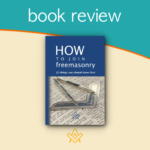 Book Review – How to Join Freemasonry Do you want to learn more about its impact on modern society? Look no further than our comprehensive guide, “How to join Freemasonry; 12 things you should know first” |
Everybody of Freemasons requires candidates to be “free and of good reputation”.
The question of freedom, a feudal requirement of mediaeval guilds, is now one of independence: the goal is to make every Mason a proper and responsible person.
Each Grand Lodge has a standard minimum age, which varies greatly and is often subject to dispensation. In England, the minimum age to join is now 18 years ( but not in full time education ).
Most Grand Lodges also need candidates to profess a Supreme Being (although every candidate must interpret this condition in his own way, as all religious discussion is commonly prohibited).
In some circumstances, candidates must be religious. The Swedish Rite, the most prevalent branch of Freemasonry in Scandinavia, accepts only Christians.
“Liberal” or Continental Freemasonry, symbolised by the Grand Orient de France, allows atheists.
The aspirant swears on his holy book to do good as a Mason at initiation. In the course of three degrees, Masons promise to keep the secrets of their degree from lower degrees and outsiders, as far as practicality and the law allow, and to support a fellow Mason in distress.
Freemasons are given formal instruction on their duties, but they are mostly left to explore the craft in their own way.
Some will simply enjoy the dramatics or the lodge’s management and administration, others will explore the craft’s history, ritual, and symbolism, others will focus on their Lodge’s socio-political side, perhaps in association with other lodges, and still others will focus on the lodge’s charitable functions.
Freemasonry & Grand Lodges Organization
Masonry is governed by autonomous and sovereign Grand Lodges and Grand Orients (termed a jurisdiction). There is no global Freemasonry controlling organisation; territories interact through mutual recognition.
Freemasonry, in its different incarnations worldwide, has an estimated six million members. The fraternity is administratively organised into autonomous Grand Lodges (or Grand Orients), each of which rules its own Masonic jurisdiction, which comprises of subordinate (or component) Lodges.
United Grand Lodge of England has the most members (with local organisation into Provincial Grand Lodges possessing a combined membership estimated at around a 150 thousand).
The Grand Lodge of Scotland and Grand Lodge of Ireland have 120,000 members. The 51 Grand Lodges in the US (one in each state and the District of Columbia) have just under 2 million members.
Freemasonry Recognition, Amity, and Regularity
Recognition governs Grand Lodge relations. Each Grand Lodge has a list of other Grand Lodges it recognises. Two Grand Lodges in amity can visit each other’s Lodges and engage Masonically.
Inter-visitation is prohibited between Grand Lodges at odds. Exclusive Jurisdiction and Regularity are the main reasons Grand Lodges refuse recognition.
Freemasonry Exclusive Jurisdiction
Exclusive Jurisdiction allows only one Grand Lodge per region. If two Grand Lodges claim authority over the same territory, the other Grand Lodges must pick one and may not all recognise it. (In 1849, the Grand Lodge of New York broke into two groups, each claiming to be the true Grand Lodge. Other Grand Lodges had to choose between them until the schism was healed).
Exclusive jurisdiction can be waived if the two overlapping Grand Lodges are in Amity and agree to share jurisdiction.
The Grand Lodge of Connecticut is in Amity with the Prince Hall Grand Lodge of Connecticut, so the principle of Exclusive Jurisdiction does not apply, and other Grand Lodges may recognise both.
Germany’s five lodge types have nominally united under one Grand Lodge to gain international recognition.
Regularity Regular Masonic Jurisdictions
Masonic Landmarks—the craft’s core membership qualifications, doctrines, and rituals—define regularity. Each Grand Lodge decides what landmarks are normal and irregular (and the definitions do not necessarily agree between Grand Lodges).
Every Grand Lodge believes its landmarks—its standards, doctrines, and rituals—are Regular and judges other Grand Lodges by them. One Grand Lodge may brand the other “Irregular” and withhold recognition if the discrepancies are severe.
The 1929 United Grand Lodge of England Recognition Rules (based on Regularity) are the most often used:
A normal Grand Lodge or three regular Lodges should form the Grand Lodge.
Membership requires faith in God and scripture.
Initiates should pledge on that passage.
Mixed Lodges have no association with men-only Lodges.
The Grand Lodge has sole authority over the first three degrees.
Lodges must display scripture alongside the square and compasses during sessions.
No politics or religion.
“Ancient landmarks, traditions and usages”.
Freemasonry Orders and degrees
Masonic bodies and Rituals
Blue Lodges (Craft Lodges in the UK) give only the three conventional degrees. Blue/Craft Lodges usually award former or installed masters. Master Masons can take further degrees in appendant or other organisations, whether or not their Grand Lodge approves .
A local or national Supreme Council (UK) administers the three Blue Lodge degrees of the 33-degree Ancient and Accepted Scottish Rite. North, South, and Continental Europe use this system.
The York Rite, with a comparable range, administers the Royal Arch, Cryptic Masonry, and Knights Templar in America.
British orders are managed by distinct authorities. The Holy Royal Arch, tied to Mark Masonry in Scotland and Ireland but separate in England, is advocated for Freemasons.
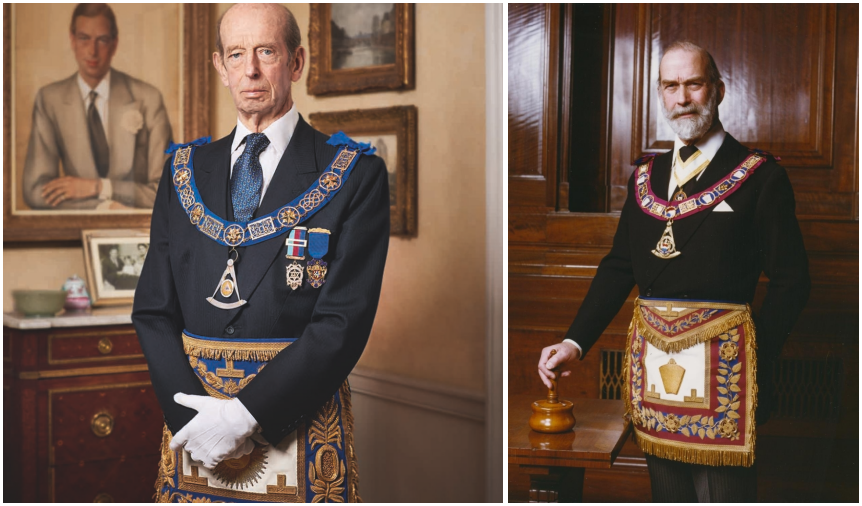
Left image: H.R.H the Duke of Kent is both Grand Master of the Craft and First Grand Principal of the Royal Arch in England.
Right image: H.R.H Prince Michael of Kent is the Grand Master for Mark Master Masons.
The Ancient and Accepted Rite, comparable to the Scottish Rite, is administered from Mark Masons Hall, Duke Street in London by the English Knights Templar and Cryptic Masonry.
The Swedish Rite is predominant throughout Scandinavia and portions of Germany.
Freemasonry Symbol Structure
Freemasonry is a “wonderful system of morals, disguised in metaphor and depicted by symbols”. Its symbolism comes from stonemasons’ tools, such as the square and compasses, level and plumb rule, trowel, rough and smooth ashlars, and others.
Although inconsistent, these instruments are assigned moral messages. Ritual and Masonic lectures and literature explain symbolism.
“The best way to characterise Freemasonry
is in terms of what it is not,
rather than what it is,”
says Western esotericism scholar Jan A. M. Snoek.
All Freemasons begin their journey in the “craft” by being “initiated,” “passed,” and “raised” into the three degrees of Craft, or Blue Lodge Masonry.
The applicant learns Masonic symbols and receives grips, signs, and phrases to indicate his degrees during these three rites. Dramatic allegorical rituals explain the Temple of Solomon’s building and Hiram Abiff’s death. “Entered apprentice,” “Fellowcraft,” and “Master Mason” are degrees.
Any Freemason from any jurisdiction may recognise these ceremonies, which vary in lodge structure and Hiramic mythology.
Tracing boards represent each degree’s primary subjects in several jurisdictions. These painted Masonic themes are displayed in the lodge per degree and discussed to the aspirant to show the lore and symbolism of each degree.
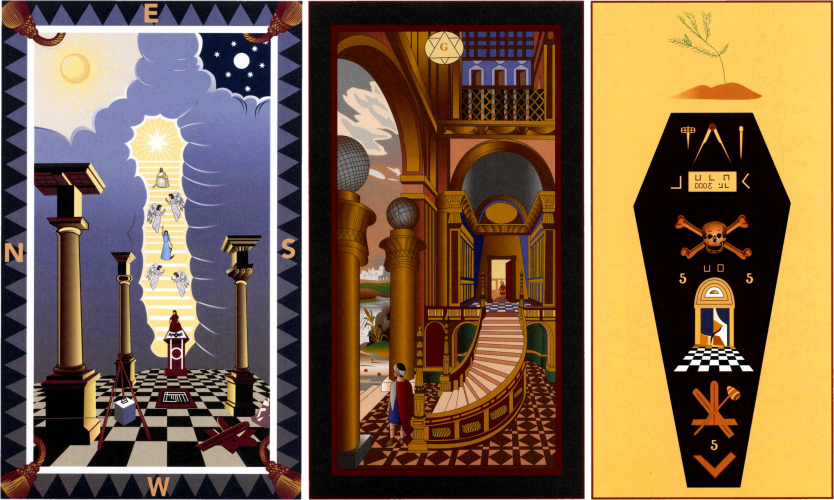
Bau at Shop at FMH
Masonic brotherhood likely stems from a 16th-century legal meaning of “brother” as one who has sworn to help another.
Accordingly, Masons swear at each degree to keep the contents of that degree secret and to support and protect their brethren unless they have broken the law.
Most Lodges take the oath or obligation on a Volume of Sacred Law, whichever book of divine revelation is appropriate to the brother’s religious beliefs (usually the Bible in the Anglo-American tradition).
Progressive continental Freemasonry allows non-scriptural publications, dividing Grand Lodges .
Freemasonry History
Masonic historians have searched the Old Charges, a sequence of comparable papers from the Regius Poem in 1425 until the beginning of the 18th century, for the movement’s roots since the middle of the 19th century.
They connect the membership of a lodge of operational masons to a mythologised history of the trade, the obligations of its grades, and the way pledges of allegiance are given on entering. Ceremonial regalia first appears in the 15th century.
It’s unclear how these local trade organisations became Masonic Lodges. The earliest rituals and passwords known, from operative lodges around the turn of the 17th–18th centuries, show continuity with the rituals developed in the later 18th century by accepted or speculative Masons, as those members who did not practise the physical craft gradually came to be known.
The minutes of the Lodge of Edinburgh (Mary’s Chapel) No. 1 in Scotland show a continuity from an operative lodge in 1598 to a modern speculative Lodge.
1717 Freemasonry
Four London Lodges convened for supper on St. John’s Day, 24 June 1717, to form the first Grand Lodge, the Grand Lodge of London and Westminster, afterwards renamed the Grand Lodge of England. Over the next decade, most English Lodges joined the new governing organisation, which expanded and self-publicized. New lodges expanded the fraternity.
As nobles and artists replaced workers, Freemasonry gained popular in Europe and the American colonies in the 18th century.
The Grand Lodge approved numerous major reforms between 1730 and 1750 that certain Lodges could not support.
On 17 July 1751, the “Antient Grand Lodge of England” was founded to conserve earlier traditions and oppose “new” Lodge innovations (historians still use these terms – “Ancients” and “Moderns” – to differentiate the two bodies).
These two Grand Lodges battled until the Moderns vowed to restore to the traditional rite. They formed the United Grand Lodge of England on 27 December 1813.
The Grand Lodges of Ireland and Scotland were founded in 1725 and 1736, respectively, although neither convinced all lodges in their nations to join for years.
Freemasonry North America
Pennsylvania had the first lodges. John Moore, Pennsylvania’s port collector, wrote of visiting lodges in 1715, two years before the first Grand Lodge in London.
In 1731, the Grand Lodge of England nominated a Provincial Grand Master for North America in Pennsylvania, creating the Grand Lodge of Pennsylvania.
While working on a commission to determine New England boundaries, Erasmus James Philipps became a Freemason and became Nova Scotia’s provincial Grand Master in 1739.
He created Canada’s first Masonic lodge at Annapolis Royal, Nova Scotia .
Other lodges in Pennsylvania obtained authorisations from the later Antient Grand Lodge of England, the Grand Lodge of Scotland, and the Grand Lodge of Ireland, which was particularly well represented in the travelling lodges of the British Army.
Many lodges came into existence without a warrant from any Grand Lodge, applying and paying for their authorisation only after they were confident of their survival.
Independent U.S. State Grand Lodges formed. A “Grand Lodge of the United States” with George Washington, a Virginian lodge member, as Grand Master was briefly considered, but it was abandoned. State Grand Lodges did not want to cede power to such a body.
Jamaican Freemasonry
British colonists brought freemasonry to Jamaica almost 300 years ago. In 1908, there were eleven Masonic Lodges, including three Grand Lodges, two Craft Lodges, and two Rose Croix Chapters.
The Lodges were available to all “freeborn” males throughout slavery. After the abolition of slavery in 1838, the Lodges were open to all Jamaican males of any race.
Jamaica also maintained close links with Masons from other nations. Jamaican Freemasonry historian Jackie Ranston stated:
Two Kingston Freemasons, Wellwood and Maxwell Hyslop, funded Simón Bolívar, the Liberator, who gave six Latin American Republics their independence.
Jamaica became an arms depot for the revolutionary forces “After taking power in Venezuela in 1828, Bolívar banned all secret societies, including the Freemasons.
Prince Hall Freemasonry
Prince Hall Freemasonry exists because early American lodges refused to admit African Americans. In 1775, Prince Hall and 14 other African-American men were initiated into a British military lodge with a warrant from the Grand Lodge of Ireland after failing to gain admission from Boston’s other lodges.
When the British military Lodge left North America after the Revolution, those 15 men were given the authority.
In 19th- and early 20th-century North America, racial segregation made it difficult for African Americans to join Lodges outside of Prince Hall jurisdictions and impossible for inter-jurisdiction recognition between the parallel U.S. Masonic authorities. By the 1980s, most U.S. Grand Lodges recognised their Prince Hall counterparts, and both traditions are working toward full recognition .
Continental Masonry
English Freemasonry spread to France in the 1720s, first as lodges of expatriates and exiled Jacobites, then as distinctively French lodges that still follow the Moderns’ ritual. From France and England, Freemasonry spread to most of Continental Europe in the 18th century. The Grande Loge de France formed under the Grand Mastership of the Duke of Clermont, who exercised only nominal authority. His successor, the Duke of Orléans, reconstituted it.
Middle Eastern Freemasonry
After the 1830 Italian revolution failed, a number of Italian Freemasons fled and secretly set up an approved Scottish Rite chapter in Alexandria, a town with a large Italian community.
In 1845, the French Freemasons publicly organised a local chapter in Alexandria. In the 19th and 20th century Ottoman Empire, Masonic lodges operated widely across the empire and many Sufi orders shared a close relationship with them .
Freemasonry Schism
In the events leading to the formation of the United Grand Lodge of England in 1813, England abolished the ritual form on which the Grand Orient of France was based.
However, the two jurisdictions continued in amity, or mutual recognition, until events of the 1860s and 1870s drove a seemingly permanent wedge between them.
In 1868, the Supreme Council of the Ancient and Accepted Scottish Rite of the State of Louisiana appeared in the jurisdiction of the Grand Lodge.
After a dispute at the Lausanne Congress of Supreme Councils of 1875, the Grand Orient de France commissioned a Protestant pastor’s report, which concluded that Freemasonry should not require a religious belief because it was not a religion.
The new constitutions read, “Its principles are absolute liberty of conscience and human solidarity,” striking out God and the immortality of the soul. The U.S. may have objected immediately.
Not all French lodges agreed with the new wording. In 1894, lodges favouring the compulsory recognition of the Great Architect of the Universe formed the Grande Loge de France.
In 1913, the United Grand Lodge of England recognised a new Grand Lodge of Regular Freemasons, which follows a similar rite to Anglo-American Freemasonry with a mandatory belief in a deity.
France has three Freemasonry branches that expand into Continental Europe:
Liberal, dogmatic, or progressive — Liberty of conscience, laicity, and church-state separation.
Traditional—Old French rite requiring belief in a Supreme Being (This strand is typified by the Grande Loge de France).
Regular Anglo-American Freemasonry, required belief in Supreme Being .
In Mackey’s 1873 Encyclopaedia of Freemasonry, Continental Freemasonry:
![]()
“designates the Lodges on the Continent of Europe which retain many usages which have either been abandoned by, or never were observed in, the Lodges of England, Ireland, and Scotland, as well as the United States of America”.
Today, it is often used to refer to only Liberal jurisdictions like the Grand Orient de France .
In 1961, the Centre de Liaison et d’Information des Puissances maçonniques Signataires de l’Appel de Strasbourg (CLIPSAS) was founded to provide a forum for most of these Grand Lodges and Grand Orients worldwide.
Freemasonry and Women, Co-Freemasonry
The principle of “femme sole” allowed a widow to continue her husband’s trade, but its application varied widely, such as full membership of a trade body or limited trade by deputation or approved members of that body.
In masonry, the small amount of evidence points to the less empowered end of the scale.
In the 1720s, James Anderson wrote the first printed constitutions for Freemasons, the basis for most subsequent constitutions, which specifically excluded women from Freemasonry.
As Freemasonry spread, women were added to the Lodges of Adoption by their continental mason husbands, which worked three degrees with the same names but different content. The French officially abandoned the experiment.
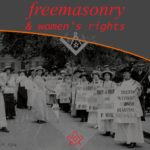 Freemasonry and Women’s Rights Philippa Lee A four part introductory series exploring the history of mixed, Co-masonry and female Freemasonry, and how the fraternity and its members helped progress the emancipation and rights of women. This includes; Lodges of Adoption, Co-Masonry and Women’s Orders, Suffragettes, and the Women Freemasons who helped change the world. read the full series … |
Maria Deraismes was initiated into Freemasonry in 1882, then resigned to allow her lodge to rejoin their Grand Lodge.
After failing to gain acceptance from any masonic governing body, she and Georges Martin started a mixed masonic lodge that worked masonic ritual.
Annie Besant spread the phenomenon to the English-speaking world. Disagreements over ritual led to the formation of exclusively female Freemason bodies in England, which spread to other countries.
Continental Freemasonry has been sympathetic to women’s Freemasonry since the 1890s, when French lodges promoted enough members to the 33rd degree of the Ancient and Accepted Scottish Rite to allow them to form their own grand council in 1899, recognised by the other Continental Grand Councils of that Rite.
The United Grand Lodge of England issued a statement in 1999 recognising the two women’s grand council.
The United Grand Lodge of England issued instructions in 2018 declaring that:
![]()
“A Freemason who after initiation ceases to be a male does not cease to be a Freemason” and that transgender men can seek to join Freemasons.
Political action – 18th century Enlightenment
Goose and Gridiron, where the Grand Lodge of London and Westminster (later England) was created.
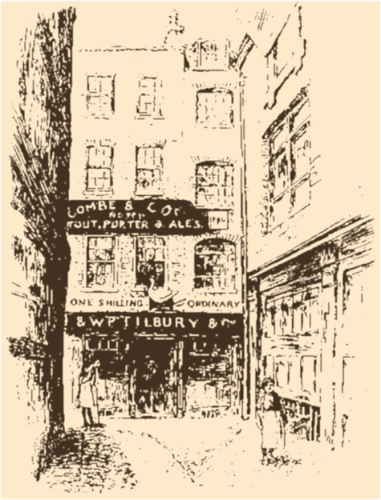
British Freemasonry offered a systematic creed with its own myths, values, and rituals. It fostered new codes of conduct, including a communal understanding, throughout the Age of Enlightenment in the 18th century. Freemasons often met in secret in ritualistic programmes in their lodges.
Jacob claims that Masonic lodges “reconstituted the polity and established a constitutional form of self-government, complete with constitutions and laws, elections and representatives,” creating a normative model for society. This was especially true on the Continent, where the first lodges appeared in the 1730s.
However, historian Robert Roswell Palmer noted that lodges operated separately and Masons politically did not act together.
American historians, while noting that Benjamin Franklin and George Washington were leading Masons, have downplayed the group’s importance in the American Revolution. Daniel Roche writes that “the real equality of the lodges was elitist,” only attracting men .
“In the nineteenth century and beyond it would be strongly associated with the cause of Liberalism,” according to Norman Davies, “Freemasonry was a powerful force in Europe from about 1700 to the twentieth century.” In Catholic countries, it was anti-clerical and spread rapidly during the Age of Enlightenment .
France & French Freemasonry
In the 18th century, liberal French politicians met in Masonic lodges to develop some of the Enlightenment ideas that dominated the French Revolution of 1789.
Avner Halpern has traced French Freemasonry’s major role in building France’s first modern political party, the Radical Party, in 1901. It used two Masonic devices: the late 19th century “civil leadership model” and the local Masonic congresses of the Grand Orient.
Russian Freemasonry History
According to Ludwick Hass, Freemasonry was officially illegal in Tsarist Russia, but exiles who returned after the 1905 revolution introduced it. These exiles had been active Masons in Paris, where lodges were politically active in the new Radical Party. In Russia, the Freemasons supported Enlightenment ideals .
Freemasonry in Italy
According to Adrian Lyttelton, in the early 20th century, Freemasonry was an influential but semi-secret force in Italian politics, with a strong presence among professionals and the middle class across Italy, its appeal spread to the leadership of the parliament, public administration, and the army.
The two main organisations were the Grand Orient of Italy and the Grand Lodge of Italy, which had around 25,000 members in 500 lodges.
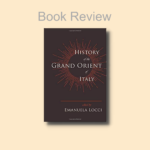 Book Review – History of the Grand Orient of Italy In depth book review in to the History of the Grand Orient of Italy by the author |
Latin America Freemasonry
The Spanish government outlawed Freemasonry in its overseas empire in the mid-18th century and vigorously enforced the ban, but many Freemasons were active in planning and plotting for independence.
Grand Master Francisco de Miranda, José de San Martin, Simón Bolivar, Bernardo O’Higgins, and others were Freemasons.
The movement was important after independence was achieved in the 1820s. In Brazil, many prominent Freemasons .
Freemasonry in Mexico
The York Grand Lodge of Mexico of Free and Accepted Masons traces its roots back to the arrival of Freemasonry in colonial Mexico during the second half of the 18th century. Despite facing initial opposition from the local Inquisition, Freemasonry ideas eventually found their way into the burgeoning Mexican independence movement during the late 18th and early 19th centuries.
The first Masonic Lodge in Mexico, known as Arquitectura Moral, was established in 1806. By 1813, the inaugural Grand Lodge of Mexico, operating under the Scottish Rite, was created. Several key figures from the Mexican independence movement were believed to be Freemasons, although definitive records are scarce.
In the early years of Mexico’s independence (1821), lodges began to multiply with relative freedom. The arrival of U.S. Minister Plenipotentiary Joel Roberts Poinsett led to a division within Mexican Freemasonry, as Poinsett encouraged the creation of the Lodge of York Rite with alignments to American interests.
In response, conservatives maintained their allegiance to Scottish lodges and a third faction formed the National Mexican Rite in 1825, seeking to establish a uniquely Mexican political model.
Anti-Masonry Masonic Opposition
One of Spain’s few Masonic temples to survive Francoism is Santa Cruz de Tenerife’s.
Anti-Masonry (alternatively called Anti-Freemasonry) has been defined as “opposition to Freemasonry,” but there is no homogeneous anti-Masonic movement. Critics have included religious groups, political groups, and conspiracy theorists, particularly those who believe in Masonic conspiracy theories or the Judeo-Masonic conspiracy .
As far back as the 18th century, revelations and exposés have been lacking context, outmoded, or blatant frauds, as the Taxil hoax .
These hoaxes and exposés have often been the basis for criticism of Masonry, often religious or political or based on suspicion of corrupt conspiracy. The political opposition that arose after the American “Morgan Affair” in 1826 gave rise to the term “Anti-Masonry,” which is still used in America today by Masons and critics alike .
Religion vs Freemasonry
Theocratic nations and organised religions have criticised Freemasonry for purported rivalry with religion or heterodoxy within the fraternity, and conspiracy theories have long claimed it is an occult and demonic power .
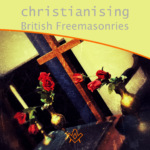 The Christianising of British Freemasonries Gerald Reilly This four-part series considers; the separation of British Freemasonries from the Grand Orient of France (GOdF); and maintaining fraternity with the Prussian Grand Lodge of the Three Globes. Both decisions impact on the relationship of Freemasonries with religion, both in their different ways can be understood as battles for the soul of Freemasonry. read the full series … |
Catholic Anti-Freemasonry
Although members of various faiths cite objections, certain Christian denominations have had high-profile negative attitudes to Masonry, banning or discouraging their members from being Freemasons.
The Catholic Church has the longest history of objection to Freemasonry, alleging that Masonry teaches a naturalistic deistic religion that conflicts with Church doctrine “Synagogue of Satan); Diuturnum Illud (Pope Leo XIII, 29 June 1881); Etsi Nos (15 February 1882); Humanum Genus (20 March 1884); Officio Sanctissimo (22 December 1887); Rerum novarum (15 May 1891); Inimica Vis (8 December 1892); Annum ingressi (8 December (18 March 1902).
The 1917 Code of Canon Law specifically stated that entering Freemasonry was instant excommunication and outlawed Freemasonry-friendly materials .
1983 saw the Church’s new canon law. The 1983 Code of Canon Law did not specifically ban Masonic orders like its predecessor.
It states:
“A person who joins an association which plots against the Church is to be punished with a just penalty; one who promotes or takes office in such an association is to be punished with an interdict.”
This named omission of Masonic orders led Catholics and Freemasons to believe that the ban on Catholics becoming Freemasons may have been lifted, especially after the perceived liberalisation of Vatican II.
However, Cardin clarified the matter. According to the United Grand Lodge of England, “Freemasonry does not intend to supplant a Mason’s faith or provide a substitute for it.”
Protestant objections to Freemasonry are more likely to be based on allegations of mysticism, occultism, and even Satanism than Catholic objections to rationalism and naturalism.
Masonic scholar Albert Pike is often quoted (and misquoted) by Protestant anti-Masons as an authority on these issues. However, Pike, although learned, was not a Freemason spokesman and was controversial among Freemasons in genealogical matters.
His articles were his personal view, based on late 19th-century Southern Freemasonry in the US. His Grand Lodge disclaims his book in the foreword. Freemasonry has never been unified .
Founder B.T. Roberts denounced Freemasonry in the mid-19th century. Roberts called Freemasonry a “mystery” or “alternate” religion and advised his church not to support Freemason ministers. The Free Methodist Church was based on freedom from secret societies .
Many Bishops of the Church of England, including Archbishop Geoffrey Fisher, have been Freemasons since Freemasonry’s foundation.
However, Anglicanism’s Freemasonry misgivings have grown in recent decades, possibly because to the evangelical wing’s rise.
Dr. Rowan Williams, the previous archbishop of Canterbury, appeared to have qualms about Masonic ritual but wanted to avoid offending Freemasons inside and outside the Church of England.
He apologised to British Freemasons in 2003 after saying their views were incompatible with Christianity and that he had prohibited Freemasons from prominent roles in his diocese when he was Bishop of Monmouth .
The Orthodox Church of Greece decided in 1933 that Freemasonry is apostasy, hence Freemasons cannot receive the Eucharist until they repent. The whole Eastern Orthodox Church agrees.
The Orthodox critique of Freemasonry coincides with the Catholic and Protestant versions:
“Freemasonry cannot be at anyway consistent with Christianity as far as it is a hidden organisation, acting and teaching in mystery and secret and deifying rationality.”
Regular Freemasonry has traditionally not responded to these claims, except to repeat that “Freemasonry is not a religion, nor a substitute for religion. There is no separate ‘Masonic deity,’ and there is no separate proper name for a deity in Freemasonry.”
Christian men who were discouraged from joining the Freemasons by their churches or wanted a more religiocentric society joined similar fraternal organisations like the Knights of Columbus and Knights of Peter Claver for Catholics and the Loyal Orange Institution for Protestants, which were “organised in part on the style of and use many symbols of Freemasonry”.
Islam and Freemasonry
Islamic anti-Masons sometimes link Freemasonry to Al-Masih ad-Dajjal, the false Messiah in Islamic Scripture. Syrian-Egyptian Islamic theologian Mūhammād Rashīd Ridâ (1865-1935) led the opposition to Freemasonry across the Islamic world in the early 20th century.
Turkey, Morocco, Malaysia, and Lebanon have District Grand Lodges under a warrant from a Grand Lodge, although many Muslim-majority nations do not allow Masonic lodges. Pakistani Prime Minister Zulfiqar Ali Bhutto banned Freemasonry in 1972. The government seized lodges .
Since 1917, Iraq has had UGLE-affiliated Masonic lodges. By 1950, UGLE had nine lodges, including a Scottish lodge founded in 1923. After the revolution, all lodges were closed in 1965. Saddam Hussein “prescribed” the death sentence for individuals who “support or praise Zionist concepts, including freemasonry, or who link [themselves] with Zionist organisations.”
Political opposition – Anti-Masonry and Freemasonry Suppression
Parliamentary declaration nearly ended English Freemasonry in 1799. After the French Revolution, the Unlawful Societies Act outlawed group gatherings that required members to swear or promise .
The Grand Masters of both the Modern and Antient Grand Lodges visited Prime Minister William Pitt (who was not a Freemason) to explain that Freemasonry supported law and legitimate power and was active in humanitarian work. Freemasonry was exempted from the Act if each private lodge’s Secretary submitted a list of members to the local “Clerk of the Peace” once a year. Parliament repealed the clause in 1967.
After Freemasons kidnapped and disappeared William Morgan in 1826, US Freemasonry faced governmental criticism. Anti-Masonic sentiment was fueled by the “Morgan Affair” and Jacksonian democracy (Andrew Jackson was a Mason). The short-lived Anti-Masonic Party ran presidential candidates in 1828 and 1832.
Erlangen Lodge Revival, 1948
Erlangen, Germany lodge. First meeting after WWII with US, French, and Czechoslovakian visitors, 1948.
The Propaganda Due lodge controversy has linked Freemasonry to Italy (a.k.a. P2). In 1877, the Grande Oriente d’Italia chartered this lodge for visiting Masons who couldn’t attend home lodges. In the late 1970s, Licio Gelli led P2 into the Vatican Bank’s financial issues. After the Grand Orient cancelled its charter and expelled Gelli in 1976, the lodge operated freely and intermittently .
Conspiracy theorists have long linked Freemasonry to the New International Order and the Illuminati, claiming that the organisation seeks world dominance or already controls world affairs. Both the far right (Nazi Germany) and the far left (previous Communist regimes in Eastern Europe) have criticised and suppressed Freemasonry.
Freemasonry & UK Justice System
In the UK, Masons working in the justice system, such as judges and police officers, were required to disclose their membership from 1999 to 2009. A parliamentary inquiry found no wrongdoing, but the government believed that Masons’ potential loyalties to fellow Masons should be transparent to the public. (who had initiated the requirement in the 1990s). Straw said the regulation was excessive because judges were Freemasons and had done no wrong .
France has prosperous and contentious freemasonry. Membership is growing in the early 21st century, but popular media reports it negatively .
Some nations associate anti-Masonry with antisemitism and anti-Zionism. In 1980, Saddam Hussein’s Ba’ath Party changed the Iraqi legal and penal code to make it a felony to “promote or acclaim Zionist principles, including Freemasonry, or who associate [themselves] with Zionist organisations”.
The Holocaust and Freemasonry
Holocaust victims—Freemasons
Liberté chérie and Freemasonry Suppression
Forget-me-not
RSHA Amt VII (Written Records), under Professor Franz Six, was in charge of “ideological” responsibilities, including antisemitic and anti-Masonic propaganda. Historians estimate that between 80,000 and 200,000 Freemasons were executed under the Nazi regime. Masonic concentration camp detainees were political prisoners and wore an inverted red triangle. Hitler felt Freemasons had surrendered to Jews working against Germany.
At the 1926 Bremen Masonic conference, the Grand Lodge Zur Sonne used the little blue forget-me-not flower as a Masonic symbol.
Winterhilfswerk, the Nazi Party’s yearly charity campaign, used a forget-me-not emblem created by the same manufacturer as the Masonic insignia in 1938. (the welfare branch of the Nazi party). This allowed Freemasons to secretly wear the forget-me-not badge.
In 1948, the inaugural Annual Convention of the United Grand Lodges of Germany utilised the forget-me-not flower as a Masonic emblem again. Freemasons throughout the world wear the insignia on their coat lapels to honour those who suffered for Freemasonry, notably during the Nazi era .
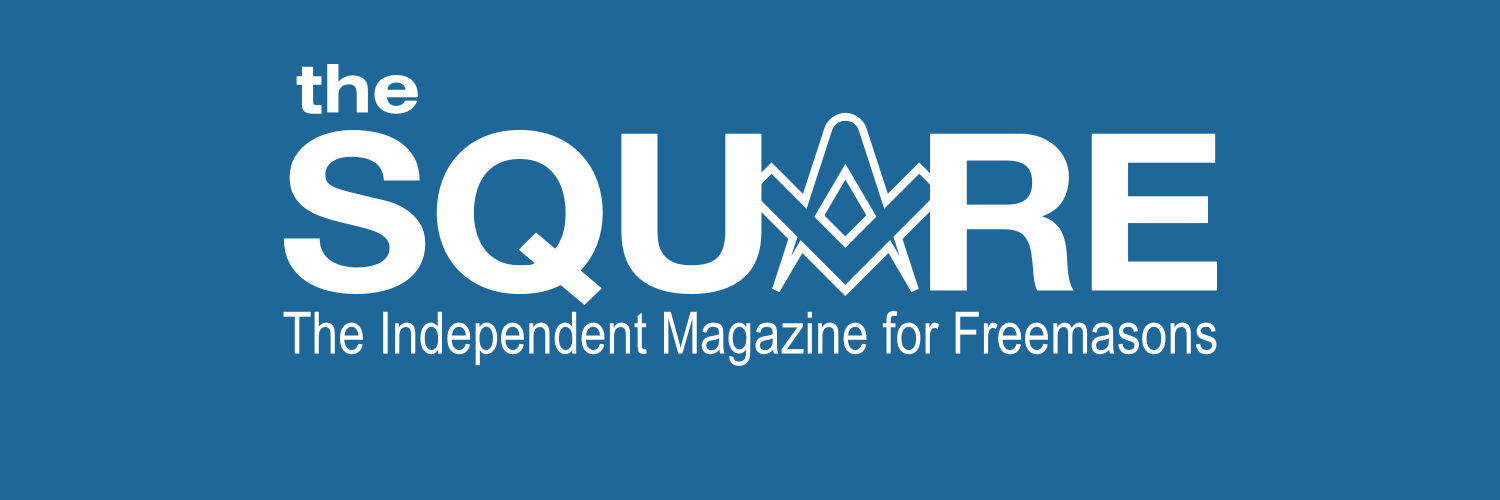
Masonic Article Series
Welcome to a world where ancient mysteries and modern insights converge – the Square Magazine Masonic Article Series.
Designed for those with a thirst for knowledge and a passion for understanding, this series is more than just a collection of articles; it's a gateway to the enigmatic world of Freemasonry.
Each piece in our series delves deep into the rich tapestry of Masonic history, philosophy, and practices, illuminating the path for both novices and seasoned members alike.
Whether you're seeking to deepen your understanding of Masonic topics or simply curious about the inner workings of this age-old fraternity, the Square Magazine Masonic Article Series offers you an unparalleled opportunity to explore, learn, and grow.
Discover the enlightening journey and the hidden treasures of Freemasonry, piece by fascinating piece.
[more articles will be added over the next few months]
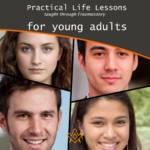 Practical Life Lessons taught through Freemasonry Learning and Development A series of articles offering a guide to practical life lessons taught through Freemasonry for young adults setting out in life after full time education. read the full series … |
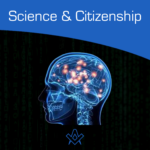 Gerald Reilly This four-part series will suggest for readers of The Square, a basis for acquiring a 21st Century Masonic Mindset, hopefully, it will lead to a future-proofing of ‘Freemasonries’. read the full series … |
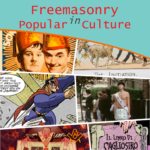 Philippa Lee Freemasonry has been the subject of satire and lampooning since its inception in the 1700s courtesy read the full series … |
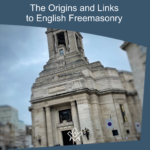 Origins and Links to English Freemasonry Barry Stedmen Freemasonry as we know it now, was established in 1717 [or 1721], however there is little written about the times before. The three part series looks at some the links between the Freemasonry of today with the original Operative builders. read the full series … |
 The Holy Land and The Holy Sites Gerald Reilly The four-part series will consider ‘masonic’ aspiration and activity regarding the Holy Land and The Holy Sites; leitmotivs include:- pilgrimage, prophecy, tourism, exploration, colonialization and empire. And, ‘to return freemasonry to the place of its nativity’ read the full series … |
 The Christianising of British Freemasonries Gerald Reilly This four-part series considers; the separation of British Freemasonries from the Grand Orient of France (GOdF); and maintaining fraternity with the Prussian Grand Lodge of the Three Globes. Both decisions impact on the relationship of Freemasonries with religion, both in their different ways can be understood as battles for the soul of Freemasonry. read the full series … |
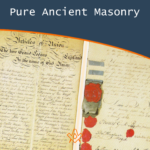 Gerald Reilly Gerald Reilly begins a new thought-provoking series on conjoined Masonry and; 'the soul of the body Masonic'. These four building operations define the soul of the body Masonic. To be of any Earthly use, relevant, freemasonries must engage with the world as it is becoming; not, as it is receding. It must address the big questions of life. The four-part series will consider the defining characteristics, lessons and benefits of Three Degrees, the Order of the Royal Arch and when conjoined, Pure Ancient Masonry. read the full series … |
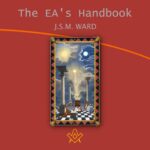 The Entered Apprentices Handbook JSM Ward Brother Ward has by precept and example led others to become eager explorers in the realms of Masonic truth. The present volume is No. 1 in a series of studies as to the meaning of our Ritual. It deals with the degree of an Entered Apprentice and is calculated to inspire the younger brethren with the resolve not to content themselves with the outward form of our ceremonies, beautiful though it be, but to gain a knowledge of the indwelling soul of Masonry and to comprehend the deep meaning of the ritual with which they are step by step becoming familiar. read the full series … |
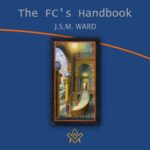 JSM Ward In the second volume we are dealing with the degree of Life, in its broadest sense, just as in the first degree we were dealing with the degree of birth, and as life in reality is educational for the Soul, we are not surprised to find that throughout the whole degree the subject of education is more or less stressed. read the full series … |
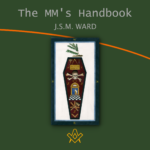 JSM Ward The third degree in Freemasonry is termed the Sublime Degree and the title is truly justified. Even in its exoteric aspect its simple, yet dramatic, power must leave a lasting impression on the mind of every Cand.. But its esoteric meaning contains some of the most profound spiritual instruction which it is possible to obtain to-day. read the full series … |
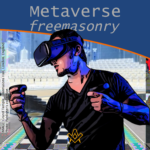 Nicholas Broadway A series of article discussing the possible future of freemasonry conducted a virtual reality space. The transition from the analogue world into the digital world. The contents and values of speculative freemasonry are upheld. Only the delivery process is advanced. Freemasonry has survived for more than 300 years thanks to its continual evolution. Metaverse freemasonry is one further step in the evolution process. read the full series … |
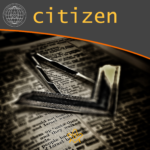 To be a Better Citizen of the World Nicholas Broadway A value proposition for Pure Ancient Masonry as defined in terms of Citizenship; the allegories, symbolism and lessons are a blueprint for all Freemasons to be a better citizen of the world. Looking through the lens of the working tools, we discover how freemasonry is a self-improvement platform for all. read the full series … |
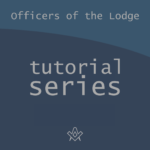 Stephen Goulding This is a 6 part tutorial series on the Officers of the Lodge. The series includes the Lodge Officers: The Tyler, Inner Guard, Deacons, Junior Warden, Senior Warden, Worshipful Master. Reference Sources for this tutorial series includes The Meaning of Masonry W. L. Wilmshurst, 1920 read the full series … |
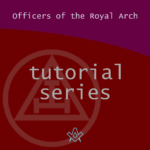 Stephen Goulding This is a 5 part tutorial series on the Officers of the Royal Arch. The series includes the Royal Arch Officers: Janitor, Sojourners, Scribe Nehemiah, Scribe Ezra, Principles. Reference Sources for this tutorial series includes The Meaning of Masonry W. L. Wilmshurst, 1920. This article series is ideally suited for Royal Arch Companions who want to learn more about the Royal Arch order. read the full series … |
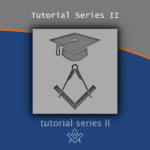 Stephen Goulding This is a 9 part tutorial series on the essential aspects of Freemasonry. This article series is ideally suited for Freemasons around the world who want to learn more about the essential aspects of Freemasonry. This tutorial series includes; Morality, Allegory, Symbols, Vows of Fidelity, Perambulations, The North East Corner, The Charges in Each Degree read the full series … |
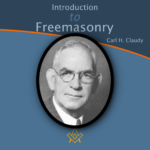 Carl Claudy Discover the captivating world of Freemasonry with our engaging "Introduction to Freemasonry" article series. Unveil the history, symbols, and customs of this ancient fraternity, and embark on an enlightening journey of Masonic knowledge. Start your path to truth with our informative and intriguing guide today! -By Carl H Claudy read the full series … |
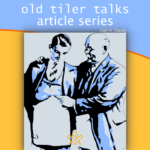 Carl Claudy Discover the captivating wisdom of the "Old Tiler Talks," a collection of insightful stories and timeless advice from a beloved Freemason figure. First published in 1921, these talks offer valuable lessons and intriguing glimpses into the world of Freemasonry. Dive into this fascinating treasure trove and experience the Old Tiler's wit and wisdom for yourself! - By Carl H Claudy read the full series … |
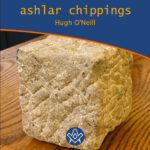 Hugh O'Neill Discover the intriguing world of Freemasonry with "Ashlar Chippings," a captivating collection of short, anecdotal tales by Hugh O'Neill. Uncover fascinating insights and stories that appeal to both newcomers and seasoned members alike. Perfect for Lodge Mentors to share during Lodge of Instructions. Delve into these hidden gems now! read the full series … |
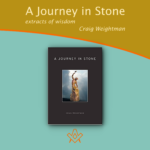 A Journey in Stone – Extracts of Wisdom Craig Weightman Discover the captivating world of stonemasonry and its connection to Freemasonry in "A Journey in Stone" by Craig Weightman. Unveil the history, symbolism, and significance of stonemasonry and its profound impact on history, art, and architecture. A must-read for anyone intrigued by these intertwined crafts. read the full series … |
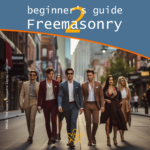 Beginners Guide to Freemasonry Learning and Development Unlock the enigmatic world of Freemasonry with our Beginner's Guide to Freemasonry. Explore the organization's rich history, symbolism, and unique rituals while discovering its core principles, lodges, and famous members. Unravel the mysteries and embark on an enlightening journey today! read the full series … |
 Freemasonry and Women's Rights Philippa Lee A four part introductory series exploring the history of mixed, Co-masonry and female Freemasonry, and how the fraternity and its members helped progress the emancipation and rights of women. This includes; Lodges of Adoption, Co-Masonry and Women’s Orders, Suffragettes, and the Women Freemasons who helped change the world. read the full series … |
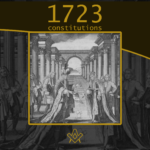 Editorial The Anderson’s 1723 Constitutions transformed Freemasonry. By establishing new principles that supported Enlightenment ideas, they marked a departure from the "Old Charges" that governed mediaeval stonemasons' lodges. Tolerance of other faiths, individualism, respect in relationships, and learning and development were all mentioned. read the full series … |
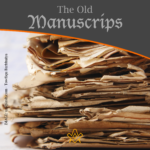 Editorial Discover the ancient wisdom of Old Manuscripts that shed light on the medieval world of stonemasons and the fascinating transition into speculative Freemasonry. Unveil the secrets behind the Old Charges and their profound impact on the core principles and values upheld by Freemasons today. Delve into the intriguing realm of brotherly love, relief, and truth with our captivating exploration. read the full series … |
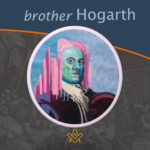 Brother Hogarth Discover the hidden mysteries of Brother, William Hogarth, the renowned British artist who cleverly embedded Freemason symbols and codes within his artwork. Uncover a new perspective on Hogarth's early career and his impact on Freemasonry's development during the eighteenth century of the Grand Lodge of England. Delve into this captivating tale with insights from expert Jeremy Bell. read the full series … |
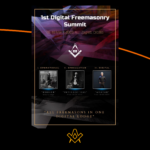 First Digital Freemasonry Summit Digital Freemasonry The goal of the 1st Digital Freemasonry Summit is to bring together representatives and delegates from the ranks of Speculative Grand Lodges, as well as representatives from Digital Freemasonry to discuss and exchange experiences thus far and to reach certain conclusions for the benefit of the development and future of Freemasonry in general. read the full series … |
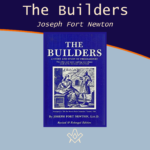 Joseph Fort Newton Discover the captivating history and philosophy of Freemasonry with "The Builders," an insightful and engaging guide that unravels the origins and evolution of this mysterious brotherhood. Dive into a world of ancient mystery religions, medieval stonemasons, and modern fraternal bonds, and learn how Masonic ideals have shaped our society for the better. Don't miss this fascinating exploration of Freemasonry's impact on both individuals and the world at large. By Joseph Fort Newton read the full series … |
 Article Series - Current Interest Editorial Discover a collection of insightful Masonic articles exploring global Grand Lodges, equality, eco-conscious living, and multiculturalism. Authored by esteemed Freemasons, these pieces highlight the relevance and unity of Freemasonry in today's world. read on to embracing timeless principles with modern perspectives. read the full series … |
 Article Series - Masonic History Editorial Explore the rich tapestry of Masonic history with articles by renowned authors worldwide. Delve into grand lodges, the Knights Templar, and more. Unravel the mysteries, legacy, and influence of Freemasonry through captivating stories and historical insights. Perfect for Freemasons and history enthusiasts! read the full series … |
 Editorial Explore the profound world of Masonic symbolism with our series of articles. Delve into the mystique of Masonic legends, the number 33, ancient tools, and more. Perfect for Freemasons and enthusiasts eager to uncover the deeper meanings behind Masonic rituals and traditions. read the full series … |
 Article Series - Esoteric Masonry Editorial Dive into the arcane world of Esoteric Masonry with our diverse collection of articles written by global masonic authors. Explore topics like Rosicrucianism, Stoicism, Alchemy, and more. Perfect for Freemasons seeking to deepen their understanding of ancient wisdom and mystical traditions. read the full series … |
 Editorial Unlock timeless wisdom and practical skills with our series of masonic articles. Gain insights into leadership, self-improvement, parenting, and critical thinking, all rooted in the rich traditions of Freemasonry. Perfect for all Freemasons keen on honing essential life and professional skills. read the full series … |
masonic knowledge
to be a better citizen of the world
share the square with two brothers

click image to open email app on mobile device



